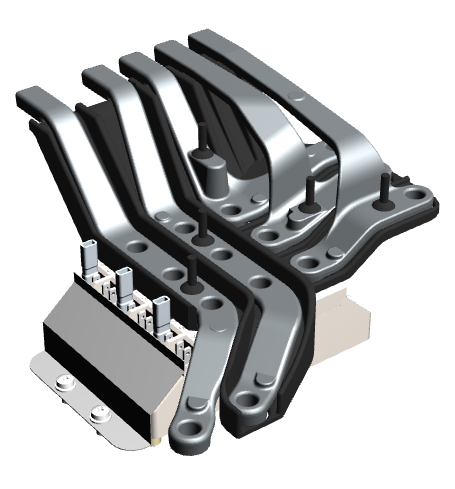Die Cast

Reliable conductors and connections are necessary for an efficient power electronic system. The debate over the pros and cons of aluminum vs. copper conductors has been discussed for many years. The increasing cost of copper versus aluminum is affecting the customer’s buying decision more and more.
Faced with these challenges, AMPHENOL AUXEL’s engineers have designed a new solution: Die-Cast Aluminum for connections and busbars with complex 3D shapes. Die-Cast aluminum connections present several advantages compared to traditional single copper busbars. This new process provides the means to avoid a higher impedance level and to limit thermal losses due to required additional connection points of the punching process. Die-Cast aluminum busbars can be fully adapted to the customer’s 3D system specification. Cooling systems can be directly integrated into the original busbar shape (e.g. cooling fins) and conductor thickness can be easily adapted to the current flow requirements. Thanks to its worldclass production facilities, its simulation methods as well as its dedicated project management teams and engineers, AMPHENOL AUXEL is able to design and manufacture a wide range of customized state of the art connecting solutions.
What are the benefits?
- Ability to produce aluminium (or copper) pieces with complex 3D shapes at fair cost
- With aluminum die-cast technique, the complexity of the product shape is directly linked to possible cost savings compared to copper solution.
Advantages:
- Better electrical conductivity thanks to the removal of some connecting points
- A lighter product
- A lower price
- Shorter assembly time (plastic support, only one part…)
- No spacer requested. They can be directly integrated in the product shape. It will improve the global electrical and thermal conductivity of the product
- Thermal heating limitation in the component connection points (capacitors, IGBTs…)
- Reduction of material losses
- Ability to directly integrate cooling system in the product design (e.g. cooling fins)
- Conductor thickness can be easily adapted to the specific requirements of your equipment
